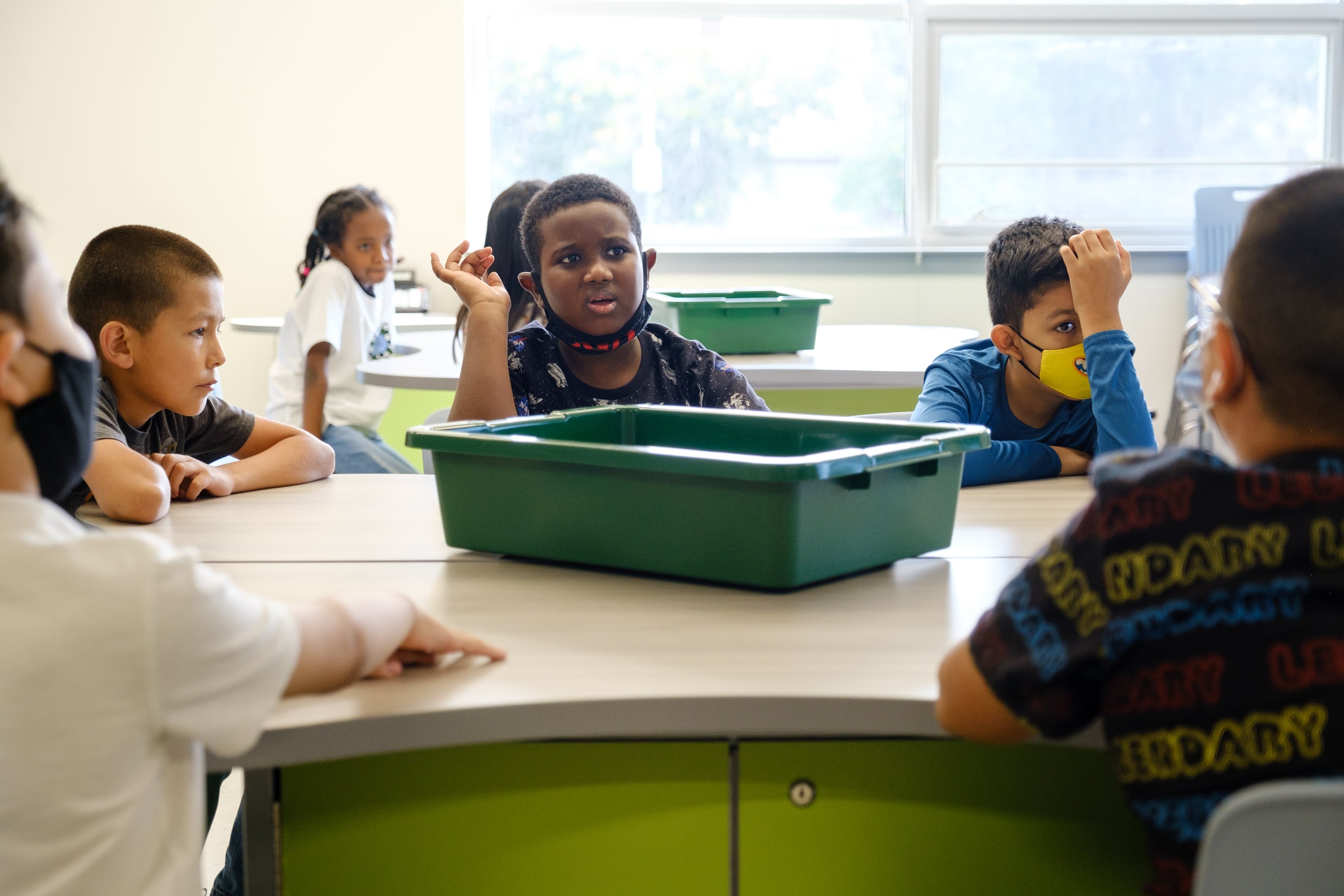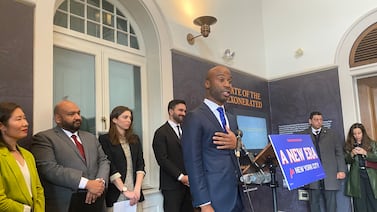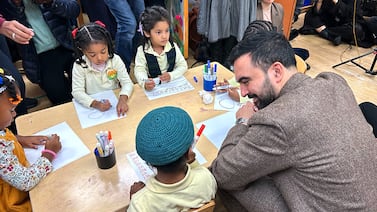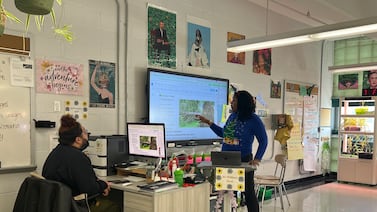Most students can return to the nation’s schools this year without a recent classroom staple — masks.
At the start of last school year, about 75% of U.S. schools required masks for students or teachers, according to the National Center for Education Statistics. By the end of the year, that number dropped to 15%.
Now, despite the emergence of the BA.5 variant, the number of districts requiring masks has dwindled to just a handful. Alongside scaled-back or scrapped COVID testing programs and quarantine rules, it’s a visible example of schools’ increasingly hands-off approach to managing the pandemic.
“The framework has kind of flipped,” said Dennis Roche, president of Burbio, a data service platform that has been tracking mask mandates in the nation’s largest school districts since last October. “It was very much a default to mask mandate in most of the country through about the winter and now it’s the opposite.”
Nearly 300 of the 500 districts Burbio tracks, including New York City, dropped their mandates in March and April. Other districts that had continued requiring masks, like Detroit, changed course over the summer.
“Students and staff should exercise good judgment and support others’ mask-wearing choices,” Prince George’s County Schools, the last Maryland district requiring masks, said in July as it announced masks would be optional moving forward.
The Los Angeles school district lifted its mandate in March but was considering a reinstatement as county health officials signaled concern. On Tuesday, the district announced it would stick with its mask-optional policy.
The shifts come as the Centers for Disease Control and Prevention recommends people in schools in high COVID level counties to wear masks indoors. Nearly half the country falls into that category.
Schools in Florida, Georgia, Utah, and Virginia couldn’t put a mandate into effect for kids even if they wanted to due to a variety of laws, legal actions, and executive orders. Eight other states in the South and Midwest have similar legislation or court decisions pending, according to Burbio.
That leaves only a small handful of districts still enforcing a mask mandate.
Jefferson County Public Schools in Louisville, Kentucky decided to require masks for the return to school. Others requiring masks for all include San Diego Unified School District, New Haven Public Schools in Connecticut, and Sacramento City Unified School District in California.
Gwinnett and Clayton County School districts, both near Atlanta, are requiring masks for adults.
Philadelphia and Newark also still have mandates in place. Philadelphia reinstated its mandate in May due to rising COVID-19 case counts and has not updated its policy since. The first day of school is still weeks away, though, and officials signaled change is possible.
“Our team is actively working with our local health experts to review our current guidelines and protocols,” a district spokesperson said. “We will make any necessary updates and share those with families before the 2022-23 school year.”
Thoughts from parents in the district are mixed.
Ashley Jimenez has four children in three different Philadelphia schools and her husband teaches in the district.
“Families must do what they feel is right for them. A mandate infers that families don’t know what’s right for them,” Jimenez said. “Clearly other school districts understand this and have made strides towards allowing families this decision. It shows Philadelphia’s continued paternalistic stance towards its mostly Black and Brown families to require masks.”
But Saterria Kersey, president of the Home and School Council at Julia R. Masterman Laboratory and Demonstration School, said with COVID still around, she “applaud[s] the district for thinking about our children’s well-being.”
In Newark, Superintendent Roger León said in June that the district would send families information by mid-August on COVID protocols for the upcoming school year.
Another difference as kids head back to class this year is vaccine access. COVID vaccines started to roll out for 5-11 year olds in late October of last year. This year, the shot is fully available to all kids 6 months and older.
But vaccination rates remain relatively low nationwide. As of July 27, only about 5% of 6 month to 4 year olds have received at least one dose of vaccine. For 5 to 11 year olds it’s 37%, and for 12 to 17 year olds it’s 69%.
The number of kids facing severe COVID cases is relatively low. Sara Bode, a doctor at Nationwide Children’s Hospital in Columbus, Ohio and chair-elect for the American Academy of Pediatrics’ Council on School Health, thinks this is part of why vaccination rates are also low.
“Although there might not be as many kids with severe complications, that number isn’t zero,” Bode said. “And so [I’m] just really reinforcing to families the reasons why as a pediatrician, I think it’s important for them to get that vaccination.”
Beyond COVID, overall childhood immunization rates dropped from 95% to 94% in the 2020-21 school year, according to data released by the CDC in April.
One percent may seem small, but it equates to tens of thousands more children than normal unprotected against illnesses like whooping cough, measles, and mumps, according to the CDC.
Bode knows parents have a variety of opinions on vaccines and on COVID mitigation strategies, but said her priority is getting kids consistent in-person learning. Vaccines, along with rapid testing and masking up in high-risk communities, can reduce illness related absenteeism, she said.
“It’s just so disruptive to schools when they’re struggling with lots of kids that are out due to positive COVID, whether they’re having severe symptoms or not,” she said.
Johann Calhoun in Philadelphia and Catherine Carrera in Newark contributed reporting.
Jessica Blake is a summer reporting intern for the Chalkbeat national desk. Contact her at jblake@chalkbeat.org or on Twitter at @JessicaEBlake.






